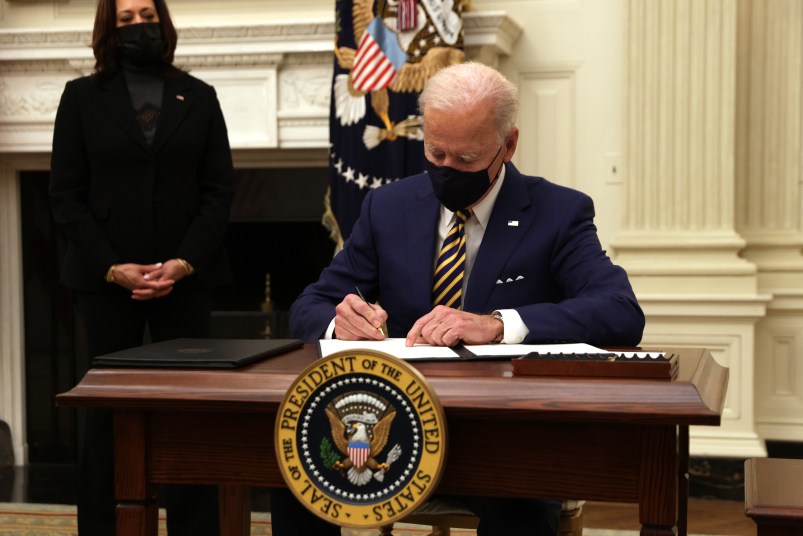To whittle President Biden’s $1.9 trillion COVID relief package down to $618 billion, 10 Republican senators something had to give. A lot of things, actually.
The Republican proposal has been billed as a “compromise” extended to Biden, who was meeting with the group of senators Monday afternoon at the White House.
One draft of the proposal eliminates $350 billion in aid to state and local governments that’s currently on offer under the American Rescue Plan, the bill supported by the Biden administration.
This is the $618 billion slimmed-down Covid relief proposal from the 10 Republican senators who are meeting today with @JoeBiden. pic.twitter.com/6EspGOUzvN
— Sahil Kapur (@sahilkapur) February 1, 2021
State and local aid been a key priority for Democratic members of Congress, and has lately attracted support from budget-strapped red state governors like Jim Justice (R) of West Virginia and Asa Hutchinson (R) of Arkansas.
It’s also been a sticking point for the GOP. When Sen. Mitch McConnell (R-KY) was Senate majority leader, he refused to include funding for states hit by plummeting tax revenues due to the pandemic. Senate Republicans, then, and now, say that they will not finance a “blue-state bailout” though fiscal problems are forcing cuts in state and municipal governments around the country.
On fighting COVID, the Republican proposal preserves basic pandemic fighting measures sought by the Biden administration: $20 billion for a federally coordinated national vaccination program, and $50 billion for COVID testing remain in the Republican proposal.
But funding to expand public health for the longer term, or to do anything towards building an infrastructure that would prepare the country for future public health crises, was left on the cutting room floor.
The Biden plan, for example, proposes the creation of a 100,000-person strong public health job corps to supplement the country’s pandemic-fighting capacity in the short-term and to create a force for public health in the longer term. The GOP proposal makes no mention of that.
In some areas, the GOP plan commits some money towards a Democratic proposal, but makes clear that it’s much less of a priority by sucking funds away from the idea.
Biden’s proposed $1,400 stimulus checks, for example, are whittled down to $1000 in the GOP proposal. In that plan, the checks start to taper off for those making $40,000 and above annually, and end entirely for those making $50,000 and up.
The stimulus checks have become a fulcrum of the bill in part because of the January Georgia Senate runoffs, where Democrats Jon Ossoff and Raphael Warnock campaigned on raising the $600 checks given out in the December COVID relief bill to a full $2,000.
Tthe Biden plan envisages $130 billion going to K-12 schooling around the country, helping some school districts stay financially above water while giving them money for PPE and social distancing measures to allow safe, in-person education. The GOP proposal defunds that to a mere $20 billion.
Other Biden proposals, like raising the minimum wage to $15 an hour, are not mentioned in the GOP proposal.







Lucy’s football.
This is my surprised face.
“You can take your austerity and shove it.”
~ Johnny No-paycheck
One of the authors of the proposal (Cassidy) was on television yesterday opposing any further funding for public schools so I’m curious if these ten Senators actually support their own plan (or if the funding is earmarked for private schools and dubiously public charters).
Can the Biden Plan be passed by budget reconciliation? Guess we need a CBO score to know that.